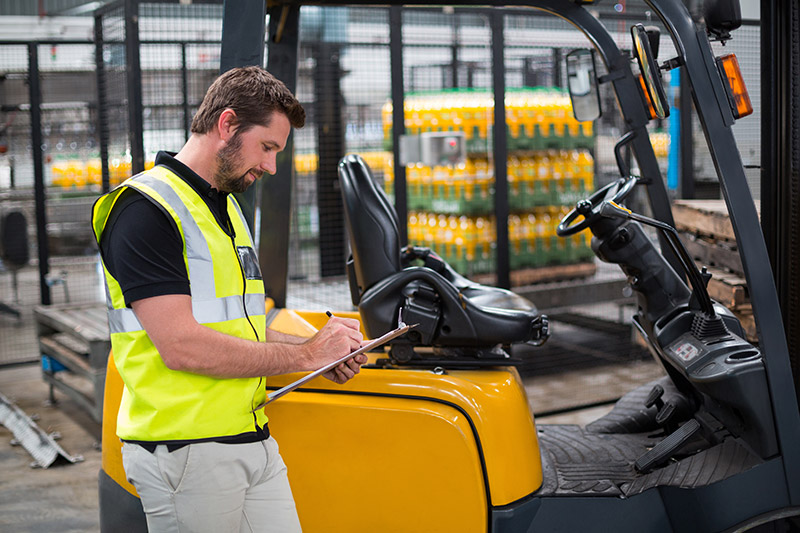Regular maintenance is crucial for keeping forklifts operating safely and efficiently while maximizing their lifespan. This comprehensive guide covers essential maintenance practices that every forklift operator and facility manager should know.
Daily Pre-Operation Inspections
Starting each shift with a thorough inspection is your first line of defense against equipment failure. Before operating the forklift:
Check fluid levels including engine oil, hydraulic fluid, and coolant. Low fluid levels can cause component failure and expensive repairs. Top up fluids as needed using manufacturer-recommended products.
Inspect tires for proper inflation, wear patterns, and damage. Uneven wear might indicate alignment issues, while cuts or embedded objects can lead to blowouts. For solid tires, check for chunking or separation from the rim.
Test all controls including lift, tilt, and drive functions. Controls should respond smoothly without sticking or unusual noises. Any delayed response could signal hydraulic system problems.
Verify that all safety equipment is functioning properly, including lights, horn, backup alarm, and operator restraint system. These features are critical for workplace safety and OSHA compliance.
Weekly Maintenance Tasks
Dedicate time each week for more detailed inspections and maintenance:
Clean or replace the air filter depending on operating conditions. Dusty environments may require more frequent cleaning. A clogged air filter reduces engine efficiency and increases fuel consumption.
Lubricate all moving parts according to the manufacturer’s specifications. Pay special attention to mast channels, chain rollers, and bearing points. Proper lubrication prevents premature wear and reduces operating noise.
Check the battery condition in electric forklifts. Clean terminals, check water levels in flooded batteries, and inspect cables for wear. Proper battery maintenance directly affects runtime and lifespan.
Monthly Maintenance Procedures
More intensive maintenance tasks should be performed monthly:
Inspect brake system components including brake fluid, pads, and rotors. Look for signs of wear, leaks, or contamination. Braking performance is critical for safety and should never be compromised.
Check drive chain tension and condition. Loose chains can cause jerky operation and accelerated wear. Adjust tension according to manufacturer specifications and replace chains showing excessive wear.
Examine fork condition including heel thickness, surface wear, and straightness. Damaged or worn forks can fail catastrophically under load. Consider professional inspection if any issues are found.
Quarterly and Annual Maintenance
Schedule comprehensive inspections and service at regular intervals:
Change engine oil and filters according to the maintenance schedule. Use manufacturer-recommended oil grades and genuine filters to ensure proper engine protection.
Inspect and service the transmission including fluid changes and filter replacement. Transmission problems can be extremely costly if not caught early.
Have qualified technicians perform thorough inspections of structural components, hydraulic systems, and electrical systems. Professional inspections can identify developing problems before they cause breakdowns.
Best Practices for Long-Term Care
Implement these strategies to maximize equipment longevity:
Keep detailed maintenance records for each piece of equipment. Track service intervals, repairs, and parts replacement. Good documentation helps identify patterns and predict maintenance needs.
Train operators in proper equipment operation and daily care. Operator behavior significantly impacts equipment wear and maintenance requirements.
Store equipment properly when not in use. Indoor storage protects from weather damage, while proper parking prevents strain on hydraulic components.
Cost-Saving Maintenance Tips
Consider these approaches to optimize maintenance costs:
Develop relationships with reliable parts suppliers and service providers. Good relationships often lead to better pricing and priority service.
Keep commonly needed parts in stock to minimize downtime. Consider your operation’s specific needs when building parts inventory.
Invest in high-quality maintenance tools and diagnostic equipment. Better tools make maintenance tasks easier and more effective.
Environmental Considerations
Maintain your equipment with environmental responsibility in mind:
Properly dispose of used fluids and parts according to local regulations. Many materials can be recycled or require special handling.
Consider using biodegradable hydraulic fluids where appropriate. These products reduce environmental impact while maintaining performance.
Keep equipment properly tuned to minimize emissions and maximize fuel efficiency.
Conclusion
Regular maintenance is an investment that pays dividends through improved reliability, safety, and equipment longevity. By following these guidelines and maintaining detailed records, you can significantly reduce operating costs and extend the useful life of your forklift fleet. Remember that while this guide covers essential maintenance tasks, always consult your equipment’s manual for specific requirements and never hesitate to seek professional service when needed.

